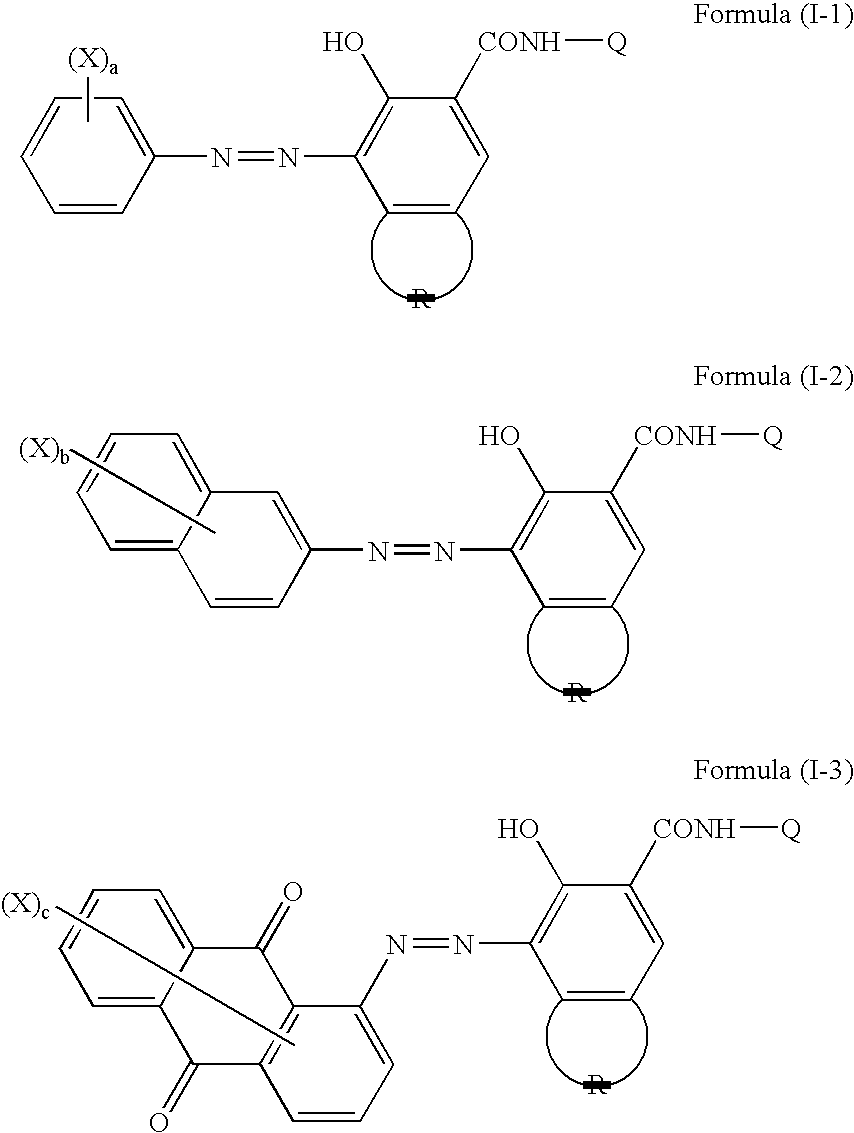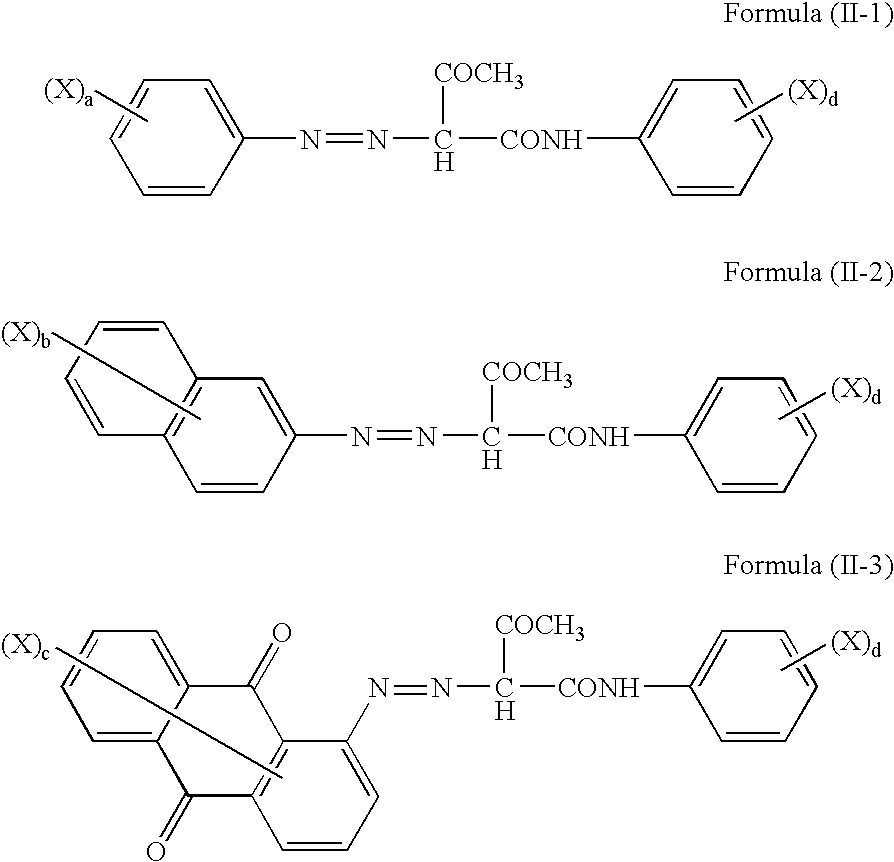Pigment compositions, colored compositions making use of the pigment compositions, and color filters
a pigment composition and composition technology, applied in the field of pigment compositions, colored compositions and color filters, can solve the problems of insufficient to obtain the properties required for the above-described applications, pigment dispersion stability decline, and insufficient pigment colorants, etc., to achieve efficient adsorption, reduce steric hindrance, and low molecular weight of acid-group-containing compounds
- Summary
- Abstract
- Description
- Claims
- Application Information
AI Technical Summary
Benefits of technology
Problems solved by technology
Method used
Image
Examples
examples
[0036]The present invention will next be described more specifically on the basis of Synthesis Examples, Examples and Comparative Examples.
[First and Third to Sixth Aspects of the Present Invention]
Synthesis Examples of Acid-Group-Containing Compounds
[0037]2-Amino-4-methyl-5-chlorobenzenesulfonic acid (20.5 parts) as a diazo component and 2-hydroxy-3-phenylcarbamoylnaphthalene (27.0 parts) as a coupler component were reacted by a method known per se in the art to obtain an acid-group-containing compound I-A (45.0 parts) described below in Table I-1.
[0038]In a similar manner as in the synthesis example of the acid-group-containing compound I-A except that the diazo component and coupler component were changed, reactions were conducted to obtain acid-group-containing compounds I-B to I-J described below in Table I-1.
[0039]An overview of the synthesis results is shown in Table I-1.
TABLE I-1Name ofacid-group-containingcompoundDiazo componentCoupler componentI-A2-Amino-4-methyl-5-2-Hydro...
example i-2
[0041]Production of a pigment composition was conducted in a similar manner as in Example I-1 except for the use of the acid-group-containing compound I-B in place of the acid-group-containing compound I-A.
example i-3
[0042]Production of a pigment composition was conducted in a similar manner as in Example 1-1 except for the use of the acid-group-containing compound I-C in place of the acid-group-containing compound I-A.
PUM
| Property | Measurement | Unit |
|---|---|---|
| particle size | aaaaa | aaaaa |
| particle size | aaaaa | aaaaa |
| weight | aaaaa | aaaaa |
Abstract
Description
Claims
Application Information
 Login to View More
Login to View More - R&D
- Intellectual Property
- Life Sciences
- Materials
- Tech Scout
- Unparalleled Data Quality
- Higher Quality Content
- 60% Fewer Hallucinations
Browse by: Latest US Patents, China's latest patents, Technical Efficacy Thesaurus, Application Domain, Technology Topic, Popular Technical Reports.
© 2025 PatSnap. All rights reserved.Legal|Privacy policy|Modern Slavery Act Transparency Statement|Sitemap|About US| Contact US: help@patsnap.com



